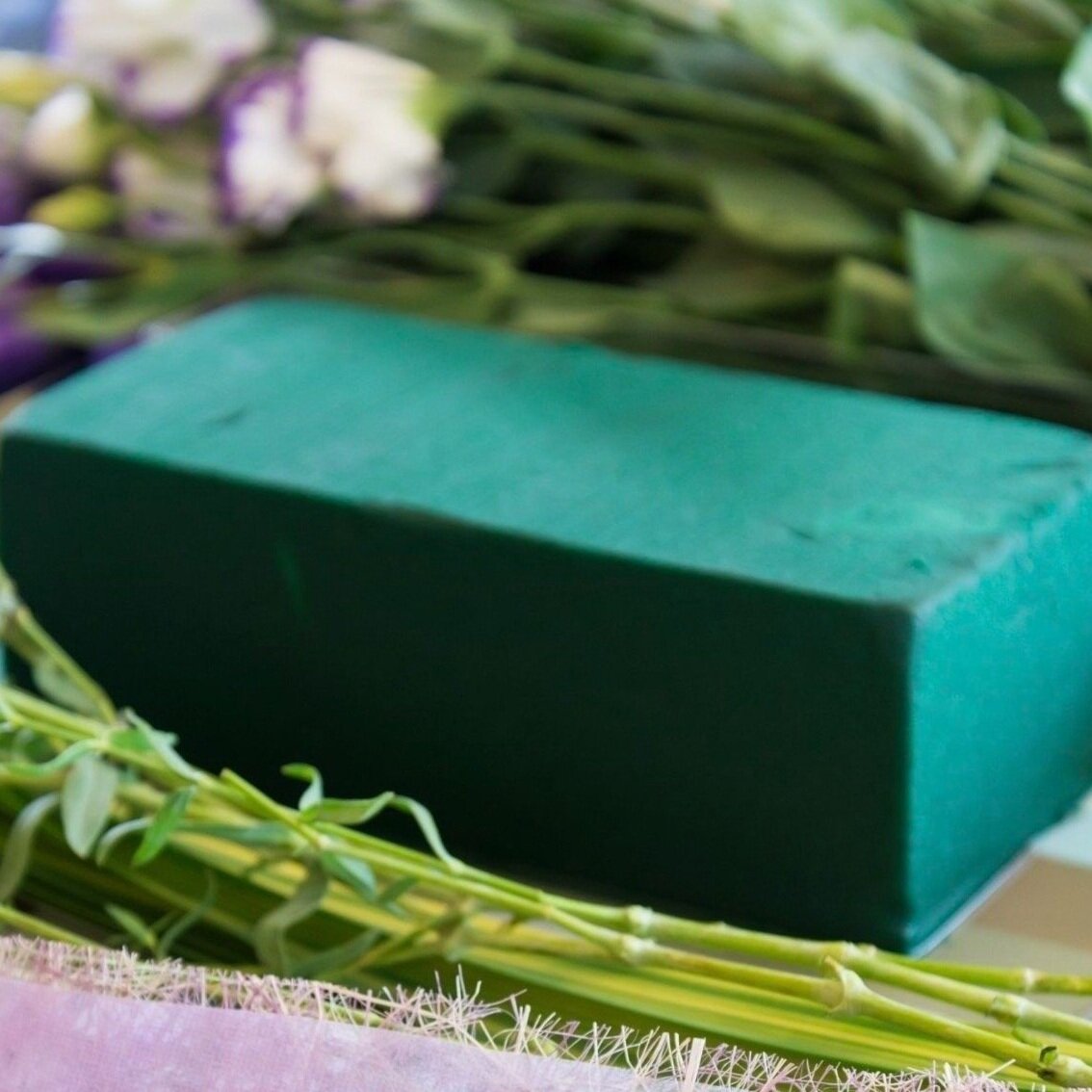Sustainable Flowers - Why I’m a Foam-Free Florist
You may have seen me mention on my website and socials that I am a ‘foam-free florist’. If you’re curious about what floral foam is and why I’m so passionate about avoiding it, this read is for you.
What is Floral Foam?
Floral foam (often known by the brand name Oasis) is a dark green, dense, and sponge-like product, usually in a brick form, though it comes in many shapes. You might have spotted it beneath blooms at events, florists, supermarkets, or craft stores. It’s used in floristry primarily as a water source for flowers because it retains moisture once soaked. It also provides structural support for floral arrangements. Sounds handy, right? It’s no surprise it’s popular in the industry.
The Environmental Cost
However, floral foam comes at a significant environmental cost. Made from synthetic microplastic particles, it’s a single-use product that is non-biodegradable and toxic to animals and humans. Long after the event is over and the floral creation has been enjoyed, the foam remains, polluting our land and water.
Sustainability is a core value of my brand. While perfection isn’t always possible, every small change towards kinder practices makes a difference. Eliminating foam from my toolkit is one way I strive to be environmentally responsible.
Alternatives to Floral Foam
So, what can florists use instead of foam? Fortunately, there are many alternatives! With creativity and a willingness to experiment, beautiful designs with support and longevity can be achieved without foam. My personal favorites include chicken wire, pin frogs in water, and reusable water tubes for installations. Other options include natural vine nests or lattices, moss, and a ‘foam’ substitute made from wool.
How You Can Support Sustainable Floristry
Supporting florists who invest time and effort in sustainable practices is crucial. By choosing a foam-free florist, you ensure that only beautiful photographs and cherished memories remain from your floral arrangements. Additionally, as with all conscious consumer choices, sharing and educating others raises awareness. Many florists and consumers may not realise the damaging effects of floral foam.
Thank you for taking the time to read this post. I hope it leaves you more enlightened about why I am passionate about the #foamfree movement in my work and the wider industry.







